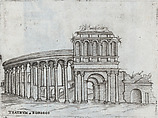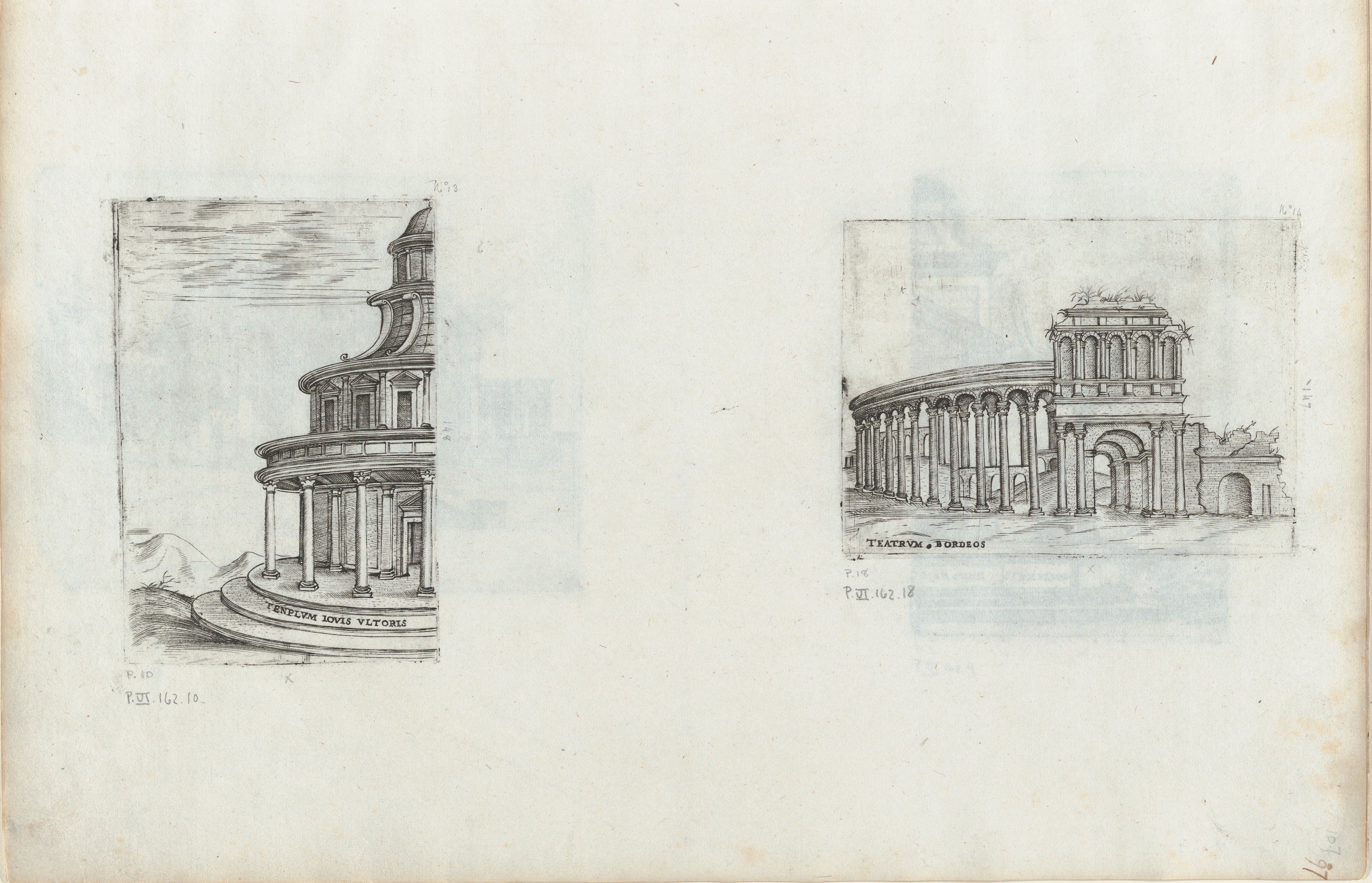Tenplum Iovis Ultoris, from a Series of Prints depicting (reconstructed) Buildings from Roman Antiquity
Formerly attributed to Monogrammist G.A. & the Caltrop Italian
Not on view
Perspectival depiction of a temple referred to as the ‘Tenplum [sic] Iovis Ultoris’. The building is characterized by its central plan and placed on podium with three steps which follows the shape of the building’s circular floorplan. The building has two main floors. The ground floor is marked by a portico, while the second has rectangular windows, crowned by pediments and flanked by pilasters. The building is crowned by a domed lantern which is supported by a drum decorated with C-volutes. While the Temple of Iovis Ultoris is identifiable with the Pantheon or Church of Santa Maria Rotonda still preserved in Rome today, this rendition was likely created as an ekphrasis, without knowledge of the remains of the original [The Pantheon is represented in a separate print in this series.] The present building, while fantastical in nature, bears some resemblance to Bramante’s ‘Tempietto’ and the centralized temples depicted by Raphael and Perugino in their respective versions of the ‘Sposalizio’, and in the latter artist’s ‘Delivery of the Keys’.
The print is part of a group of architectural prints depicting buildings from Roman Antiquity, ranging from triumphal arches to bath houses, temples and palaces in Italy, France and Spain. Some of the buildings have been artificially reconstructed based on Medieval descriptions, while others are depicted in their ruinous states. The plates are known in several (uncatalogued) states, and have undergone minor changes over time. Several titles of buildings have been changed, and the plates have been cropped as a result of plate cracks and oxidation.
Most copper plates for this series have been engraved on both sides. This print is taken from the same plate as the 'Arcus Lutii Septimii'.
This group of prints was purchased as part of an an album in 1926, but taken apart by the Museum in 1934. The album appears to have been compiled in the 17th century, although the majority of prints date from the 16th century. The larger part of the prints is focused on mythological subjects and objects and architecture from Antiquity. The album was part of the collection of the architect Hippolyte Destailleur and was sold in the sale of his books and prints in 1895. The Museum acquired the album at G. Rapilly & Fils in 1926. Where the album had been kept in the mean time is unclear and several prints were taken out in this period. The museum's numbering does not reflect the order of the original album, but Destailleur's numbering system is retained on the inidividual sheets, allowing for the reconstruction of its original content.
Due to rights restrictions, this image cannot be enlarged, viewed at full screen, or downloaded.
This artwork is meant to be viewed from right to left. Scroll left to view more.




